In 2022, SIG Sauer released updates to their laser rangefinder product line and the latest addition to their product lineup is the SIG Sauer KILO6K-HD Compact rangefinding binocular. The KILO6K-HD is a binocular that not only has a built-in laser rangefinder, it also has the Applied Ballistics UltraLite ballistics solver built-in.
Binoculars and laser rangefinders are often viewed as separate optical devices and most people will have both a binocular and laser rangefinder. In recent years, binoculars with laser rangefinders built-in are becoming more common.
Hunters are the biggest drivers for these rangefinding binocular units as having two devices in one single unit lowers the amount of equipment and weight being carried. Furthermore, the growing awareness of NRL Hunter matches where all stages are blind, and the competitors must locate, identify, range, and engage targets within a time-limit are causing more people to realize the advantages afforded by a rangefinding binocular.
What is also pushing the rangefinding binocular sector even more is the inclusion of ballistic calculators with these all-in-one units. A person use these advanced rangefinding binoculars to locate an object, get the distance to the object, and then get a firing solution on that object/target.
I am intrigued by the rangefinding binocular but find a lot of disparity between the options available in terms of features and quality. My biggest concern with getting a rangefinding binocular is that rangefinding technology is constantly being improved upon and manufacturers continue to increase the capability of rangefinders. Thus, spending a significant amount of money on a laser rangefinding binocular can result in a lot of depreciation when the next generation of rangefinding binoculars are released a year or two later.
The SIG Sauer KILO6K-HD Compact rangefinding binocular came at the right time in that it offered a lower cost to entry obtaining a rangefinding binocular with ballistics. This would allow me to try out the platform with what should be decent quality (based on SIG historical industry performance) and then allow me to make a determination on where I want to go with a higher end rangefinding binocular.
It is critical to note that I was able to acquire the SIG Sauer KILO6K-HD Compact at a significantly lower price than street/retailer prices. So it was very attractive for me to try these out. Thus I ordered a set directly from SIG Sauer.
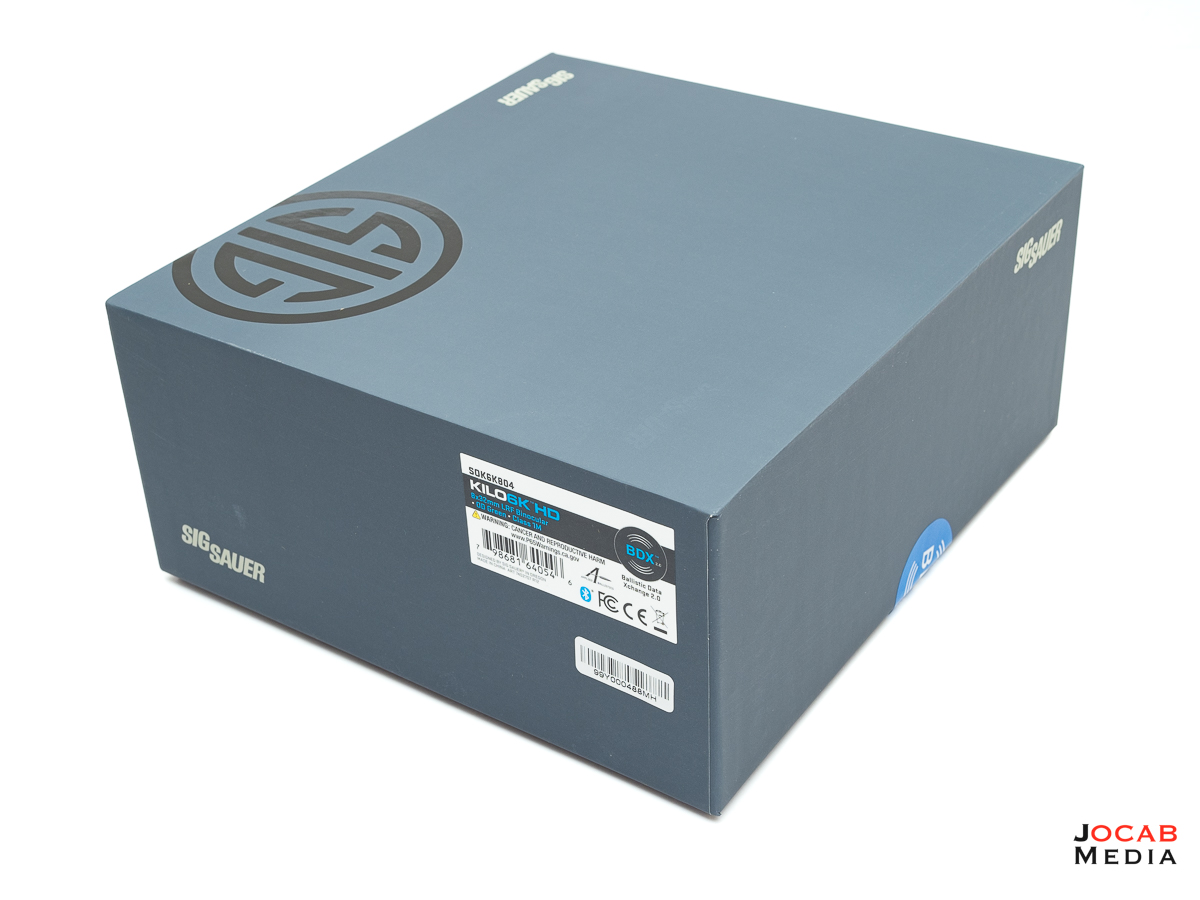
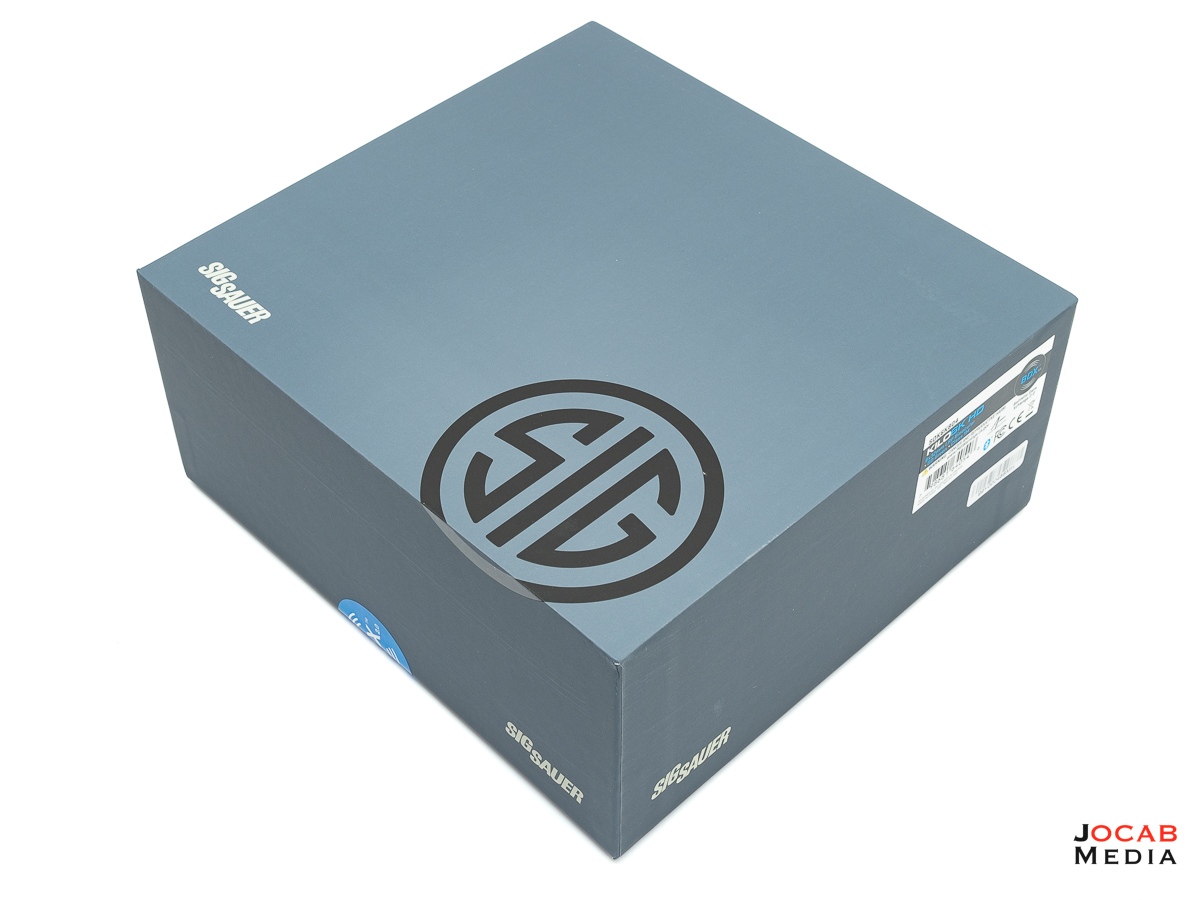
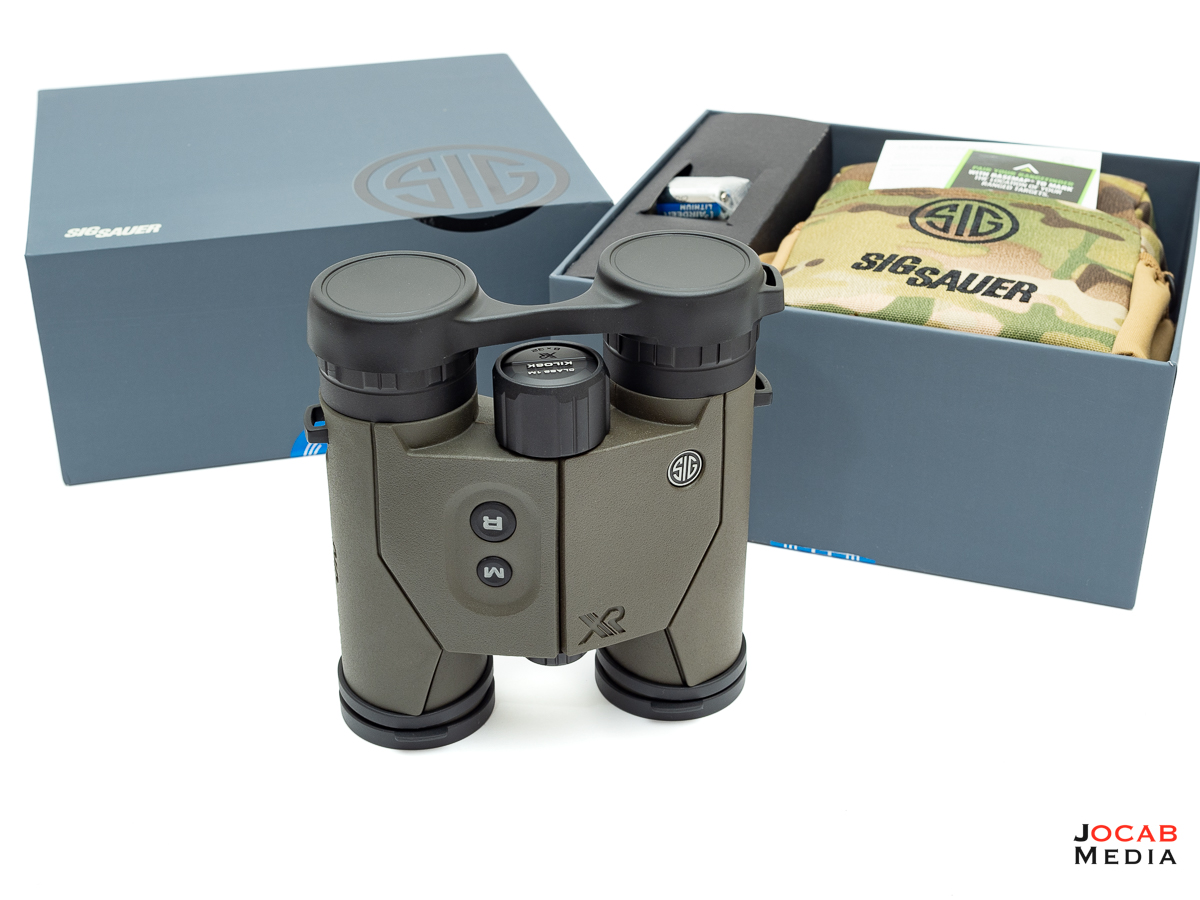
The KILO6K-HD includes the typical CR2 lithium battery used in most laser rangefinders, a neck strap for the binocular, and a carrying case which can convert into a chest harness with an included strap.
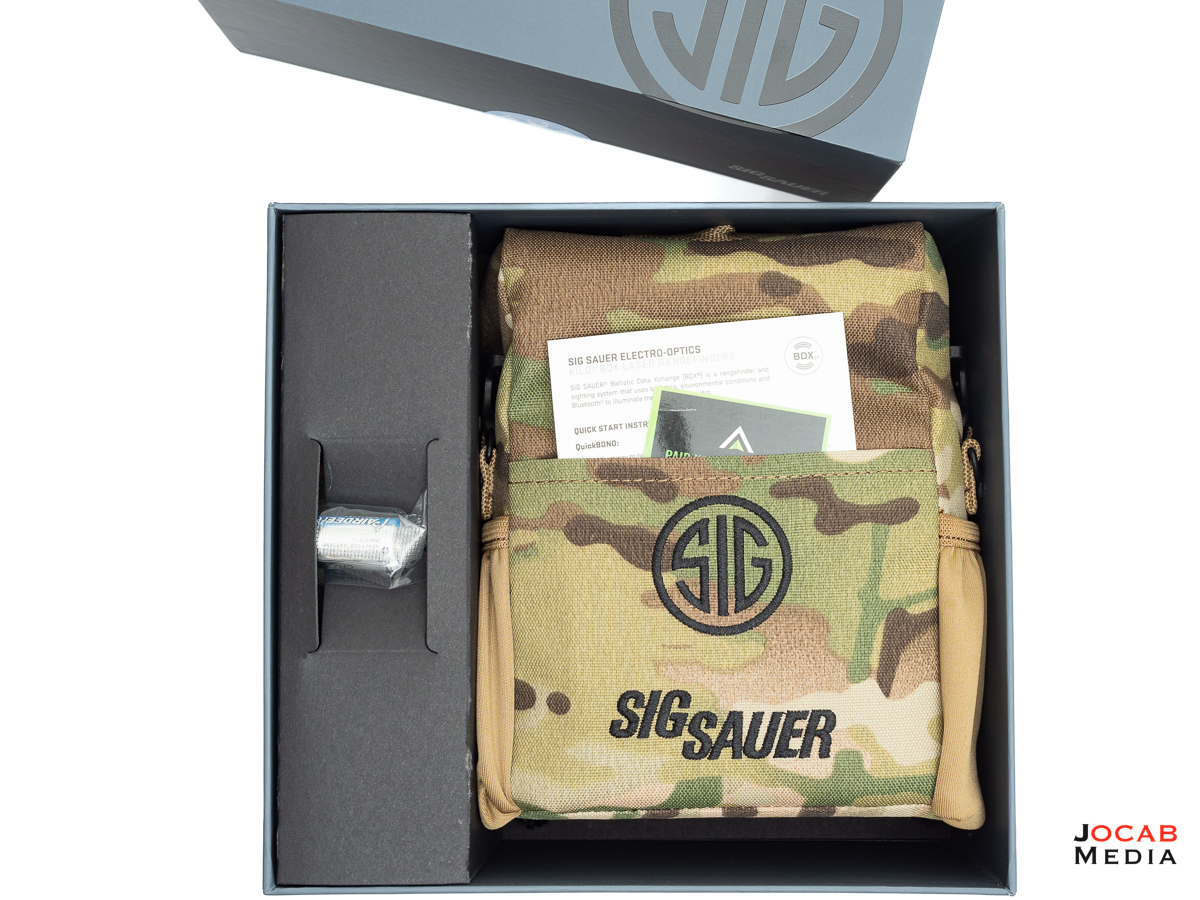
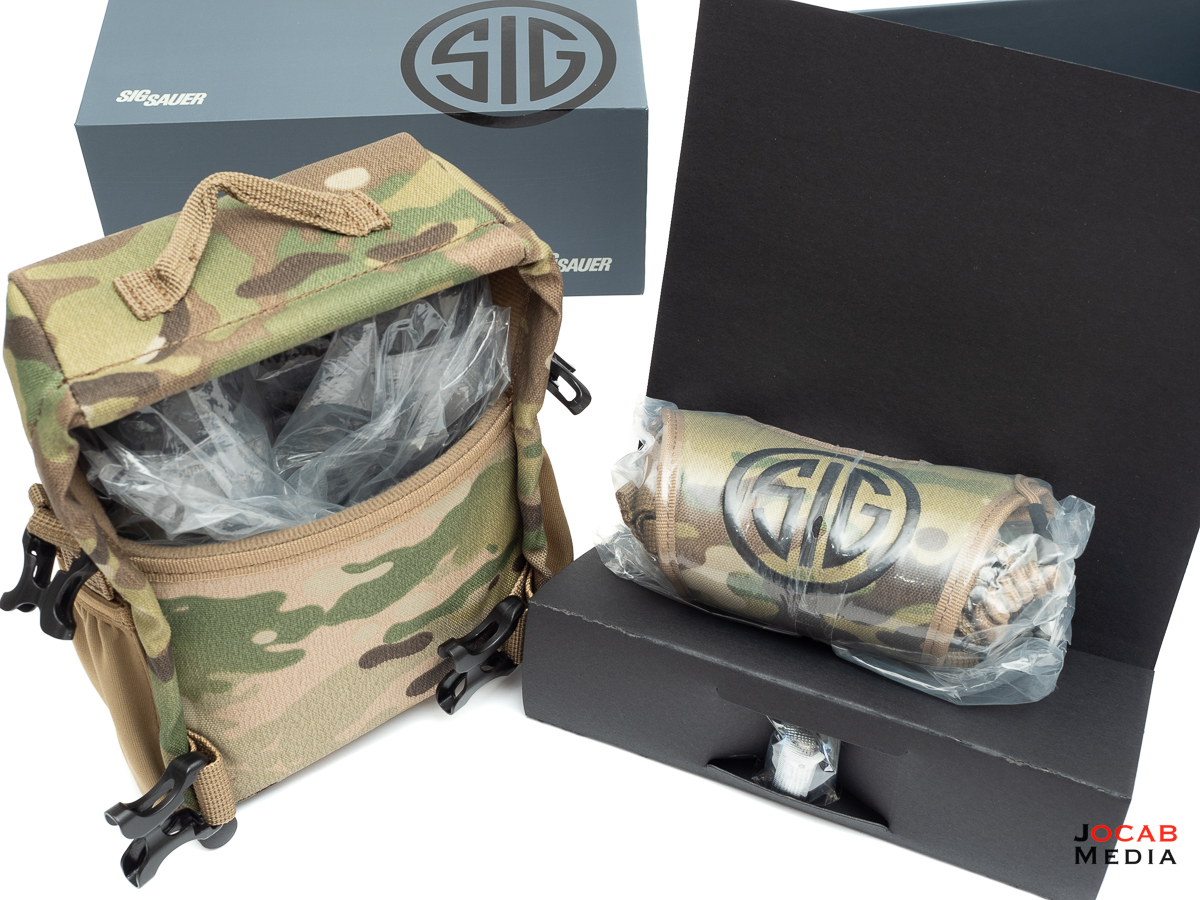
I opted to get the KILO6K-HD 8×32 as opposed to the 10×32 version which it is also available in since I wanted to prioritize field of view over magnification. The KILO6K-HD 8×32 has a field of view of 7.6 degrees (399 ft at 1000 yards) vs the KILO 6K-HD 10×32 which has a field of view of 331 ft at 1000 yards).
As stated earlier, the KILO6K-HD has a laser rangefinder built-in which is rated to 6000 yards reflective, approximately 2500 for ‘deer’ (small non-reflective / minimally reflective), and 3000 for trees (large non-reflective).
The KILO6K-HD also has Applied Ballistics UltraLite software onboard. This ballistic calculator is functionally similar to the KILO8K-ABS or KILO10K-ABS units with one major difference: the UltraLite will not provide a ballistic solution for distances beyond 800 yards. However, it can be paired with a Kestrel weather unit that has Applied Ballistics for targets beyond 800 yards.
Furthermore, the KILO6K-HD has onboard weather sensors in order to feed the internal Applied Ballistics UltraLite solver so it can return a more accurate solution.
As far as image clarity, the quality of SIG optics is the main reason I didn’t want to invest in the flagship KILO10K-ABS HD rangefinding binocular. SIG optics are notorious for a blue tint in their glass and the image quality is bested other manufacturers in similar price ranges (e.g., Vortex Optics).
There is a blue tint in the glass of the KILO6K-HD 8×32 unit I received. However, it is surprisingly not as drastic in other SIG optics I have looked through. The blue tint is not very noticeable and it will most likely be perceived as being a dim image as opposed to a bluish image.
The center of the lenses are relatively clear. While the resolution is nowhere near a Swarovski NL Pure (not even close), I found the image to be good for scanning a hill side. Edge clarity on the other hand is quite poor. Approximately halfway from the dead center of the image to the edge is where the image quality begins to degrade. It is quite apparent at the edges that the clarity has fallen off.
The OLED display in the right tube is nothing special. It is your typical OLED read out that is comparable in clarity to most other OLED rangefinders.
Unlike the KILO8K-ABS, the KILO6K-HD in Applied Ballistics mode does not show the distance to target and the firing solution on the same read out. It will automatically cycle through the distance and angle to target, then to the elevation drop, then to the wind hold, and repeats.
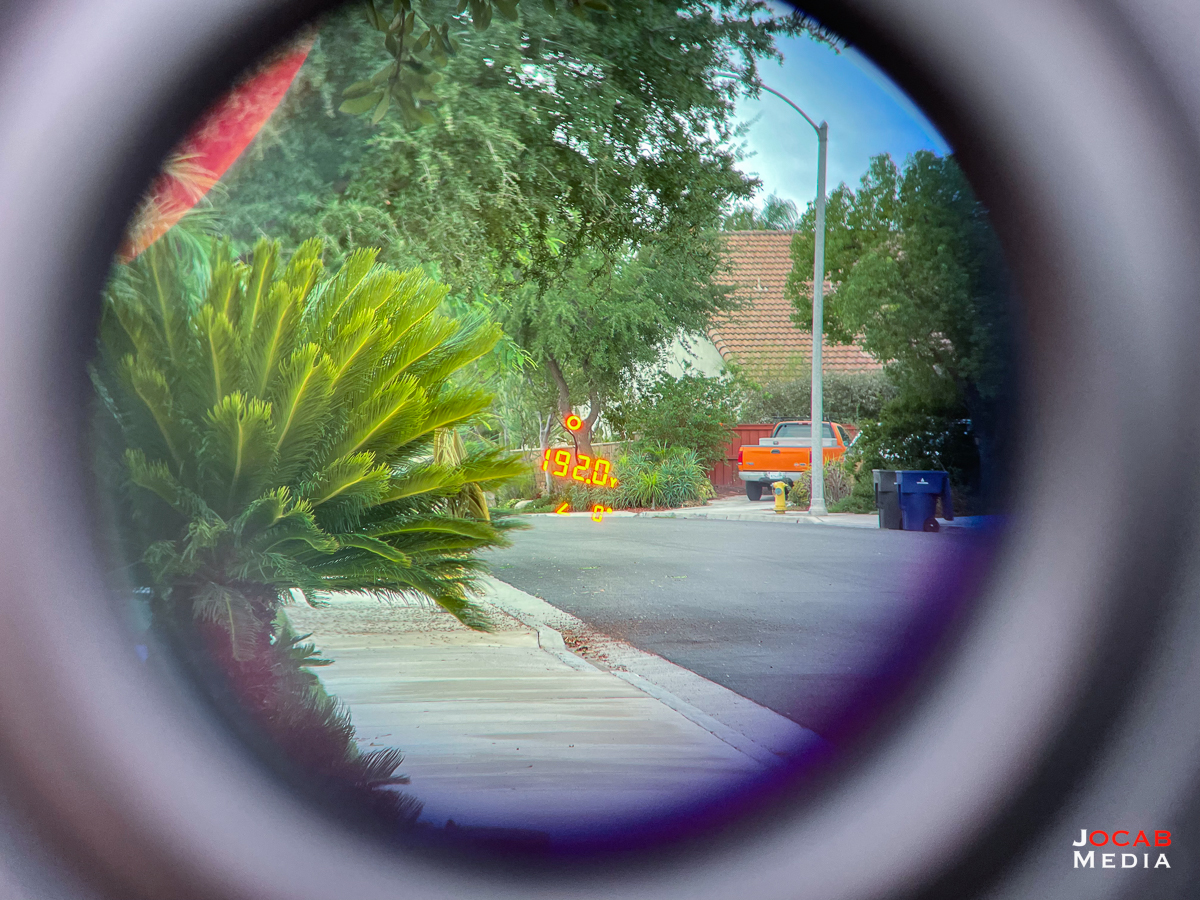
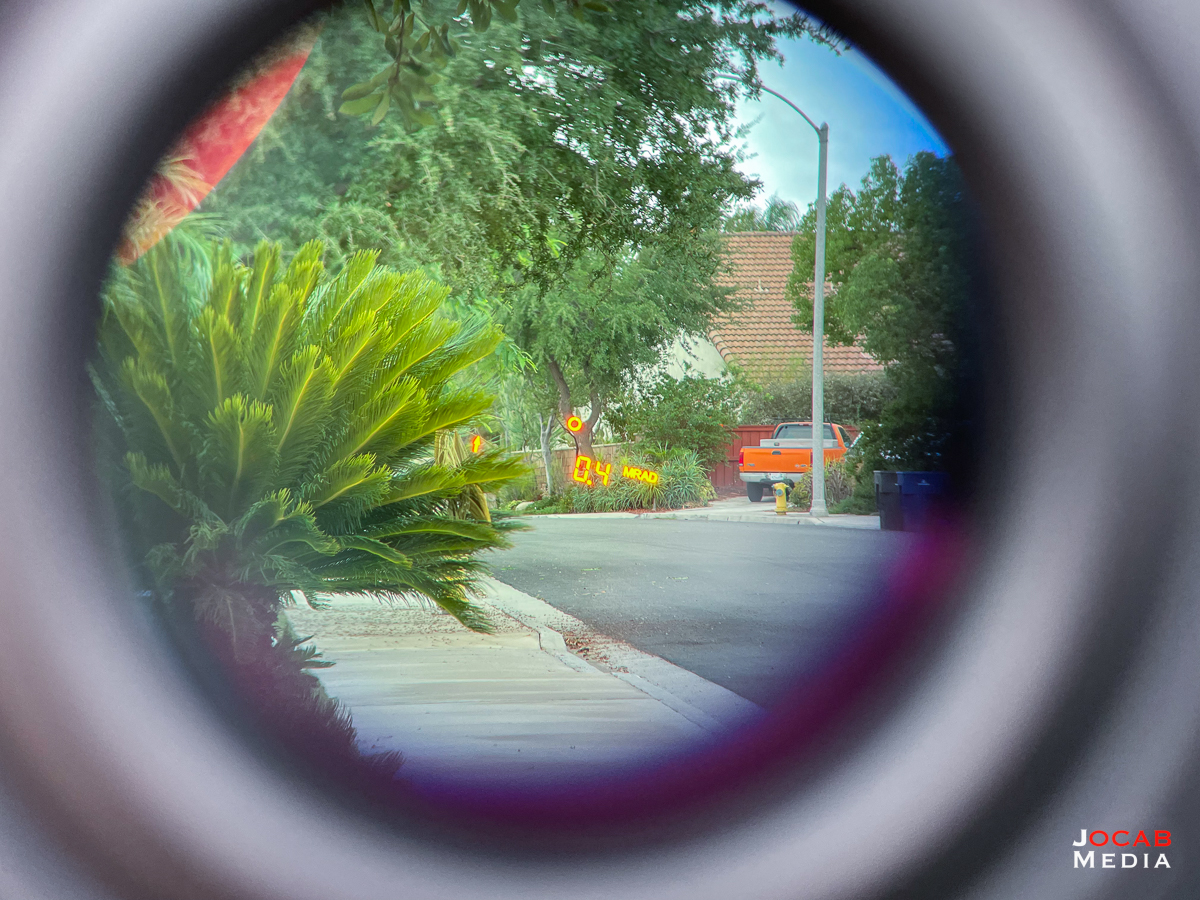
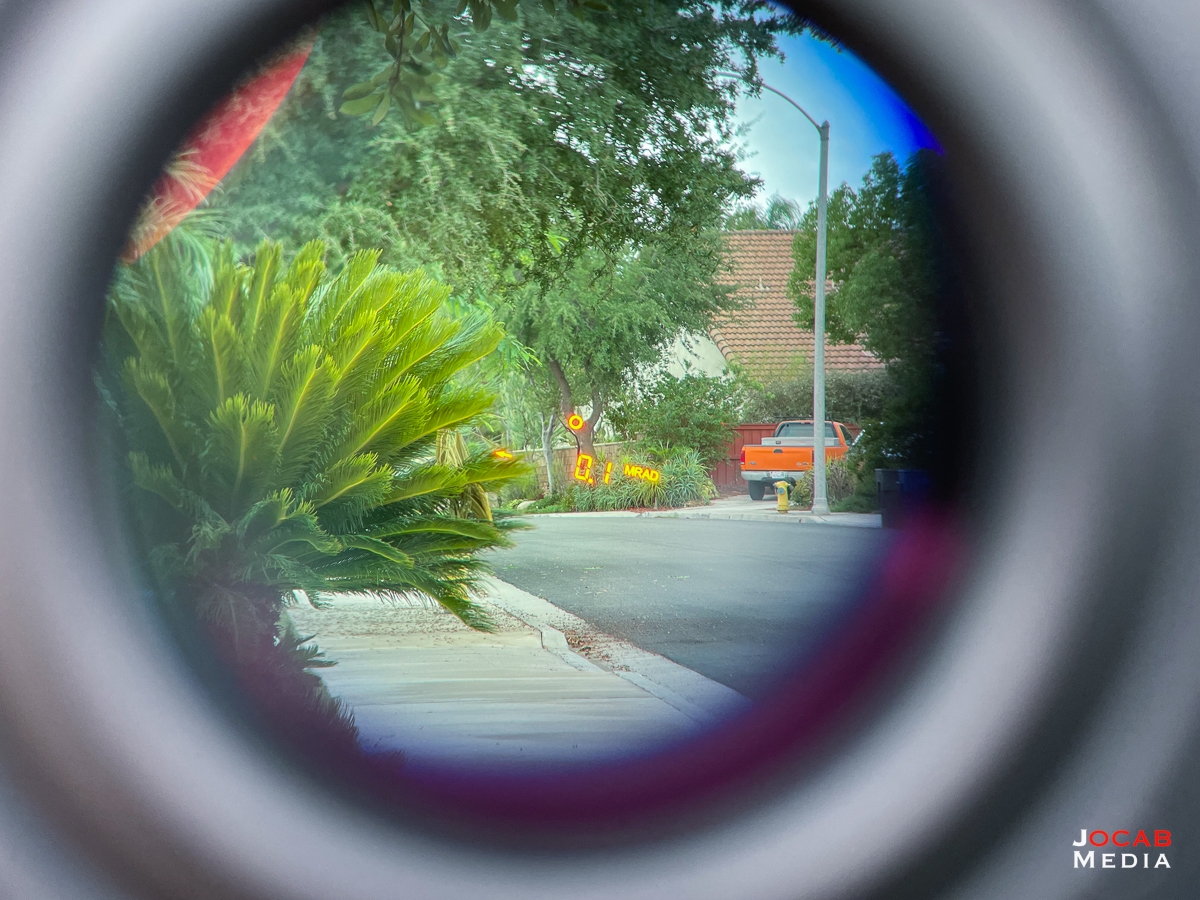
The rangefinder appears to be more consistent and reliable than my KILO8K-ABS. I have experienced issues with the KILO8K-ABS in harsh sunlight on non-reflective objects, whereas the KILO6K-HD rangefinder is able to register a reading in the same conditions on the same objects. In my limited testing of the LRF functionality, getting distance readings on trees and large objects were consistent to ~2200 yards. I did not flex the laser rangefinder to test the 2000, 3000, and 6000 yard rating specifications outlined earlier. However, I feel the LRF is working great in the likely shooting distances for most people of 2000 yards and under.
I will likely amend this article in the next few months as I get data points from more usage.
It appears to return distance readings relatively quickly, along with the ballistics solutions. I did not think it was slow or lagged. Even when pairing a Kestrel 5700 Elite, the KILO6K-HD seems to return values without lag. Granted, the fact that the LED cycles between three readings while in BDX (ballistics) mode could cover up any lag in the solver or communications with a Kestrel.
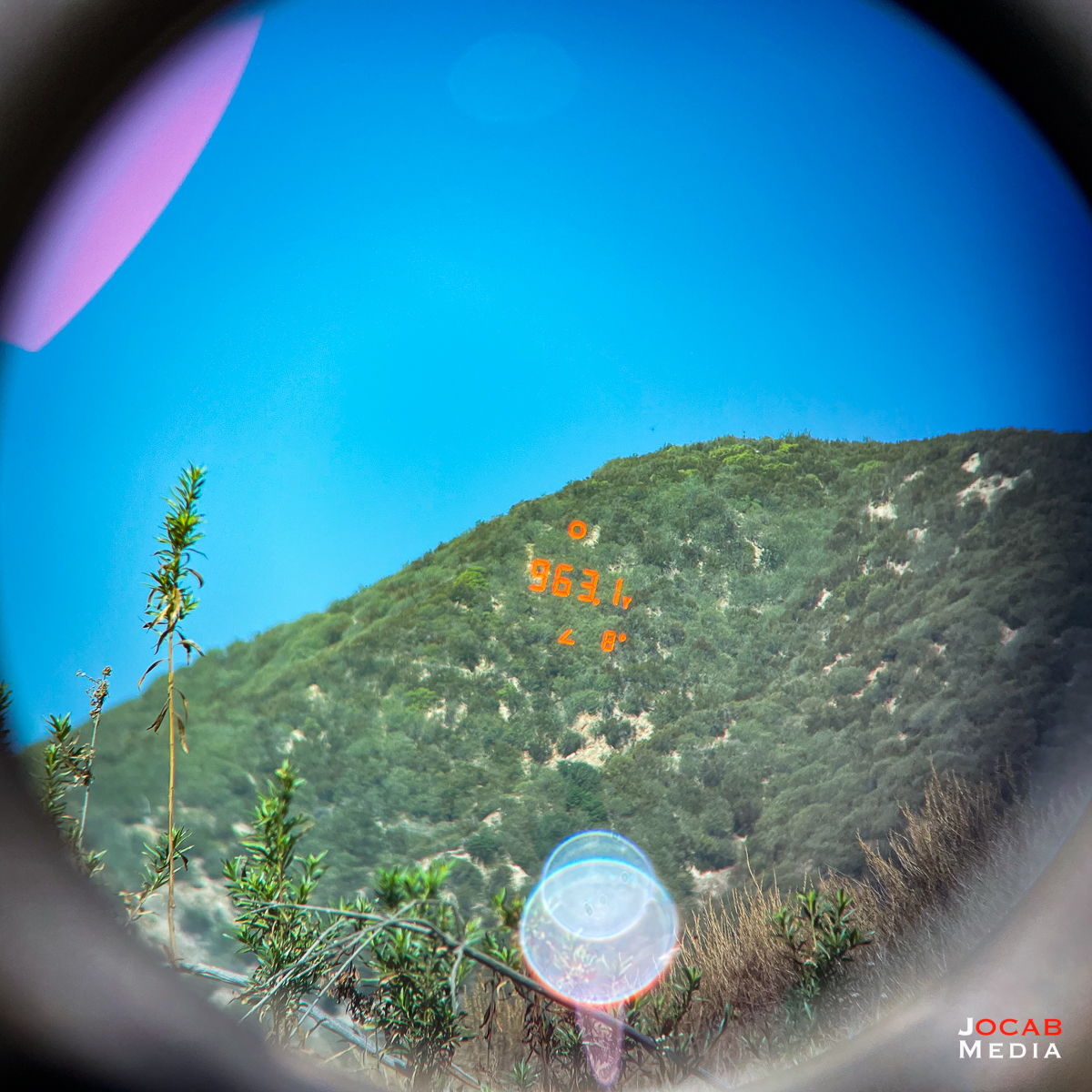
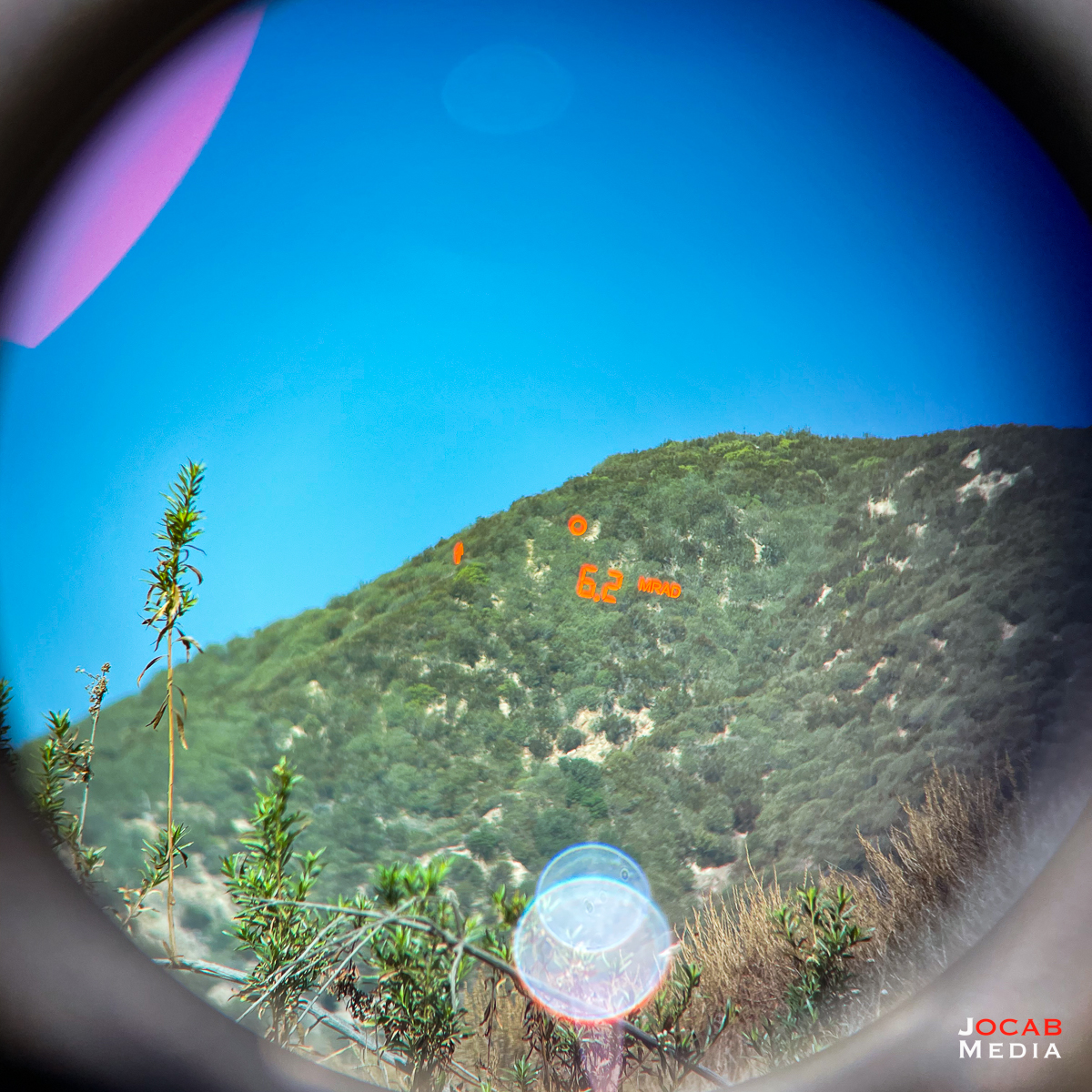
While the KILO6K-HD carries ‘Compact’ in its name by SIG Sauer, it is not much smaller than other binoculars. SIG indicates the KILO6K-HD has a 5.7 inch overall length, 2.2 inch height, and 5 inch width with a weight of 26.1 ounces. Compared to my SWAROVSKI OPTIK 12×42 NL Pure binocular with a 6.2 inch length, 2.8 inch height, 5.1 inch width, and 29.5 ounce weight, the KILO6K is just slightly smaller.
Granted, the KILO6K-HD does have a rangefinder built-in, so this is an unfair comparison. The recently released Leica Geovid Pro 8×32 rangefinding binocular has a 6 inch length, 2.8 inch height, 5.1 inch width, and weight of 30.7 ounces. By comparison, the KILO6K-HD is slightly smaller than the Leica competitor. However, my point is that the ‘Compact’ naming convention for the KILO6K-HD should be taken with a grain of salt.
The ergonomics of the KILO6K-HD are sub-par in my opinion. The unit is compact and has a laser rangefinder built-in. Thus, the bridge takes up a lot of real estate between the tubes so your hands do not have anywhere to go around the tubes. You will be placing your hands over the bridge when you hand-hold the KILO6K-HD unit.
Granted, I have the 8×32 version with a field of view of 399 feet at 1000 yards, so I can still scan and range without any major issues while hand-holding the KILO6K-HD. Although resting a tripod will significantly increase comfort over long glassing sessions.
The KILO6K-HD Compact has a 1/4″-20 threaded hole on the front of the bridge which I assume is for a tripod adapter, however I could not find a tripod adapter sold by SIG. I have a Vortex Optics tripod adapter for Vortex binoculars and it works with the KILO6K-HD, as the Vortex adapter also uses 1/4″-20 threads.
I am not a fan of this type of adapter because it adds too much bulk to the overall form factor of the binocular if you were to transport it. You can take the binocular adapter off relatively quickly as it uses a thumb screw, however it also means that you are juggling the thread protector / thumb screw that is usually on the binocular. There is a good chance you will lose the thumb screw / thread protector if you are constantly taking it off in the field to install the aforementioned tripod adapter.
After spending time with the SIG Sauer KILO6K-HD Compact, I do have a few criticisms.
One issue I found with the KILO6K-HD is something I noticed immediately out of the box: the objective lens covers fit very loose. The objective lens covers are a very flexible rubber material and are supposed to fit over the objective tube. However, the covers hardly have any tension and there is only a quarter inch on the outer wall of the cover, so even the lightest touch side of the cover will cause it to come off.
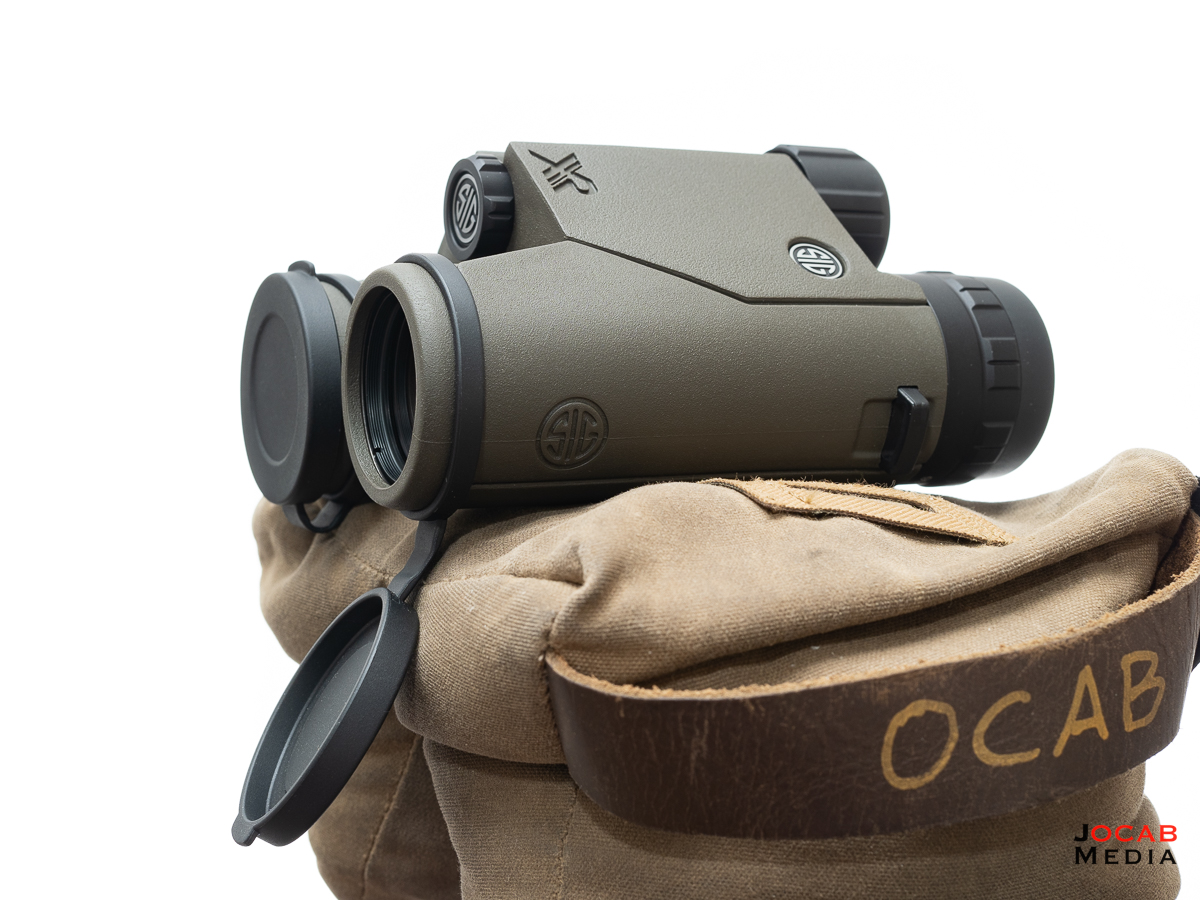
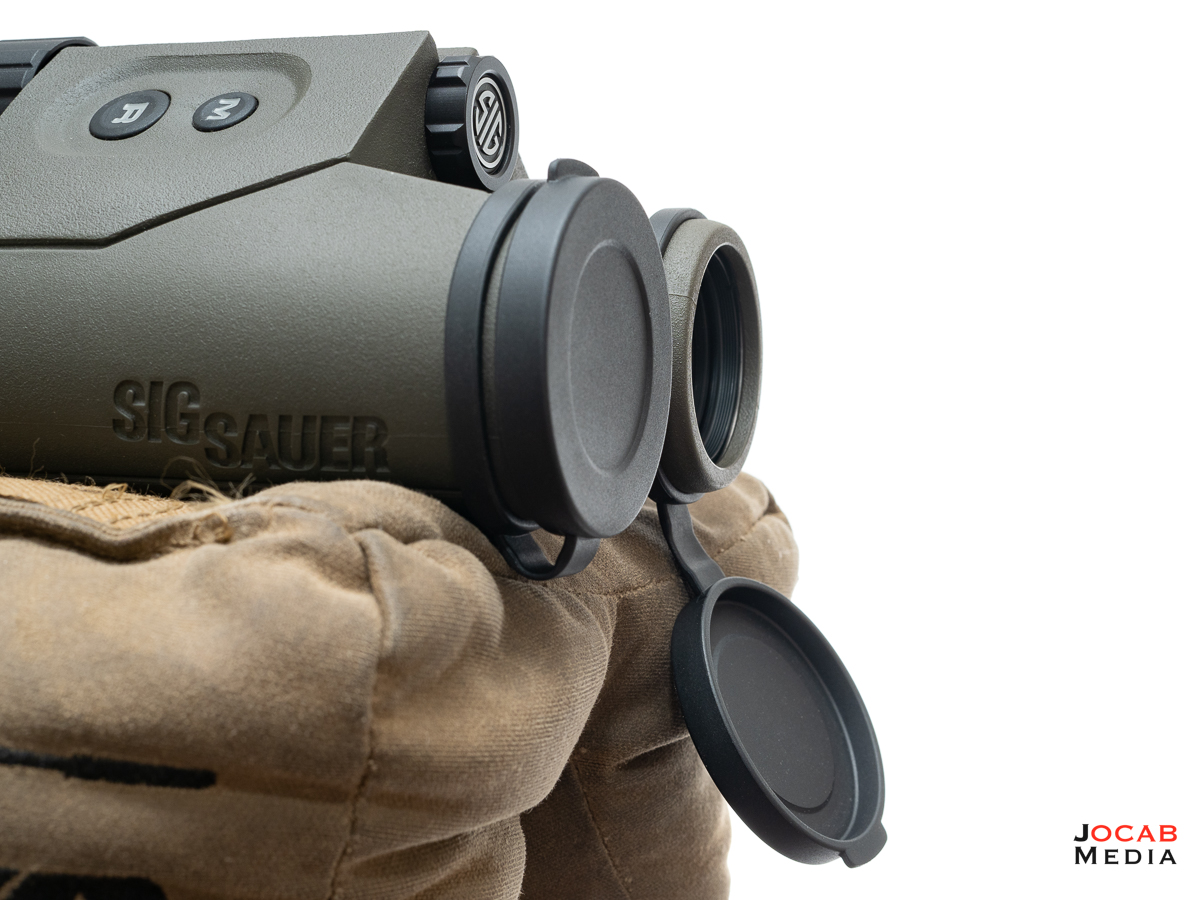
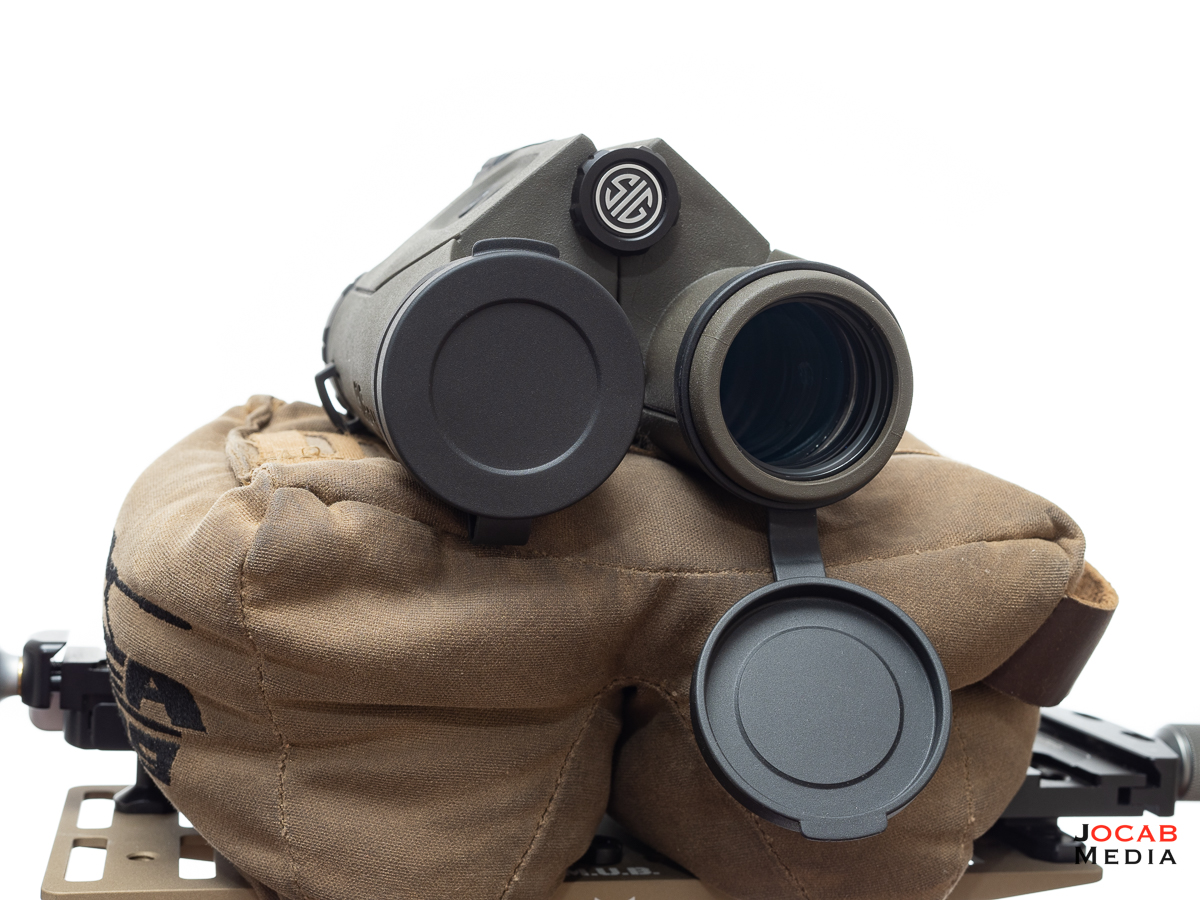
Frankly, these covers are barely a step above worthless. They work if they stay on, but the fact they barely remain in place is why I ended up leaving them off the binocular unit.
Another issue I noticed very early on is the focus adjustment knob. The focus knob on the bridge is very inconsistent in tension. During the entire range it will vary in tension with sponginess at the extreme ends. Also, there is a friction noise and feeling throughout the adjustment range of the focus knob, and it sometimes makes a slight clicking noise. I have handled many binoculars of various manufacture and price ranges and the only time I ever felt a focus knob with this chatter and friction is on a very low end, low budget binocular.
A minor criticism relates tripod mounting, which is a topic already discussed earlier. The objective barrels of the KILO6K-HD do not have enough room for the Really Right Stuff SOAR Cinch-LR binocular adapter, which is what I prefer for binoculars. Users of a KILO6K-HD will have to resort using a universal tripod adapter (e.g., retention strap style) or by resting it on a bag that is resting on a tripod (with or without a tactical table).
I also discovered that the internal level is off by at least -1 degree. I attempted to range various objects at eye level and it was constantly showing that the object was at one degree decline. When I aimed slightly higher with an obvious angle, it would then read off 0 degrees (level). Side by side with my SIG Sauer KILO8K-ABS, the KILO8K-ABS would read correctly (at least what I believe to be correct). I tried connecting the KILO6K-HD to my phone using the SIG app and checked to see if it had configuration settings to calibrate the level, but no calibration function exists.
While it is not a huge negative, and it is only really an issue because KILO8K-ABS display is so nice, I am not a fan of the LED read out of the KILO6K-HD because it does not return all of the data on a single screen. As mentioned earlier, the display auto-cycles when in BDX mode between three different LED read outs (distance, elevation, and windage). The KILO8K-ABS returns all values on one single read out thanks to an AMOLED display. When you have a rangefinder with a ballistic solver, you desire the data to display immediately and in full context.
Would I recommend the SIG Sauer KILO6K-HD Compact rangefinding binocular?
The KILO6K-HD is a relatively lightweight and compact binocular with a solid rangefinder built-in along with limited ballistic solver capability. The image quality is not terrible and the fall off at the edges of the tubes should not be too detrimental. However the build quality on the minor details (e.g., focus adjustment knob, lens covers, internal level inaccuracy) leaves much to be desired.
Even though I found a few things I do not like about the KILO6K-HD, I think it is a decent option given there is a lack of competition with the same capabilities at the price point.
The MSRP for the KILO6K-HD 8×32 and 10×32 are $1013.99 and $1208.99, respectively (as of September 2022). Retailer prices are not much less than MSRP, with pricing around $1000 and $1100 for the 8×32 and 10×32 have been seen. Although, there were some initial promotional sales with the 8×32 being sold for $800.
I alluded to the fact that I acquired the KILO6K-HD with significantly discounted pricing through a program I can take advantage of. I was able to get this unit for $600. At this price point I feel it is definitely worth it. At $1000 I would have harder time convincing myself to buy the KILO6K-HD 8×32, given that I know the various flaws it has.
However, since there is not much else at the $1000 price point with a binocular + rangefinder + ballistic calculator, and in a relatively compact package, the KILO6K-HD is a decent buy at this point in time.
It is important to note the one product close to the KILO6K-HD is SIG Sauer’s own KILO3000BDX 10×42. This is an older model that is somewhat similar to the KILO6K-HD, but lacks on-board environmental sensors. The current MSRP of the KILO3000BDX is $1343.99.
There is one thing SIG Sauer could do that increase the attractiveness of the KILO6K-HD: Offer the ability to upgrade the Applied Ballistics UltraLite software to Applied Ballistics Elite.
Even if it were a paid upgrade, having AB Elite in the KILO6K-HD so the operator can obtain ballistic solutions beyond 800 yards would make the KILO6K-HD the unquestionable go-to option for rangefinder binoculars with ballistic solver capabilities at this price point.
Although, this may be an unlikely scenario as SIG would likely think a KILO6K-HD with AB Elite would cannibalize KILO10K-ABS sales.
I plan on keeping the SIG Sauer KILO6K-HD Compact 8×32 for some time and I am enjoying the ability to obtain the range to a target and get a firing solution all from the observation optic. The efficiency of an all-in-one unit makes me desire a higher end platform.
Right now the only thing out there that has top grade glass, a respectable rangefinder, and Applied Ballistics Elite built-in is the Leica Geovid Pro. I am inclined to go with the Leica if the opportunity arises, however, I feel like I want to wait for what Swarovski may be working on. The Swarovski EL Range (TA) is highly regarded for its optical performance. However, I would prefer Applied Ballistics built-in as opposed to the Swarvoski in-house ballistic calculator.
In summary, I feel the SIG Sauer KILO6K-HD is a mild to moderate buy if you are looking for a laser rangefinding binocular on the lower end of the price scale for laser rangefinding binoculars, and are willing to accept a few flaws. If you can get the KILO6K-HD for 25%+ off the MSRP, I would rank it a moderate to solid buy.

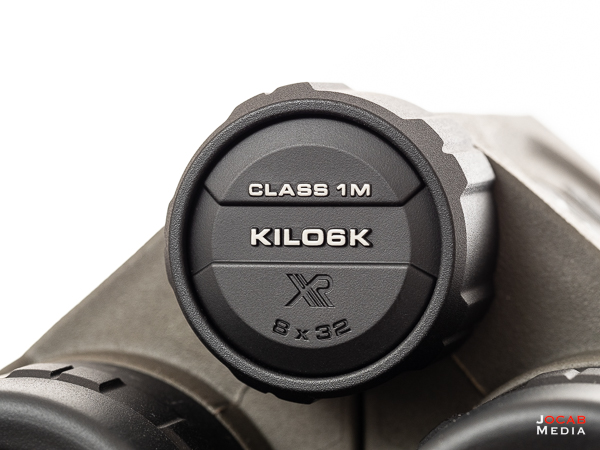
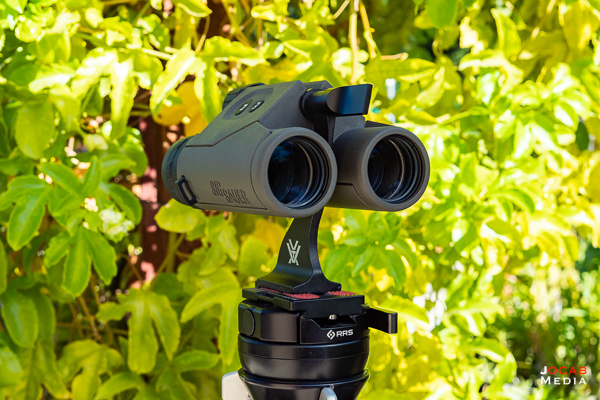
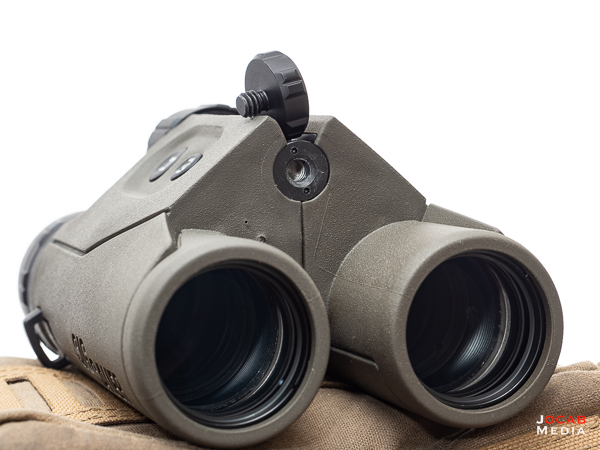
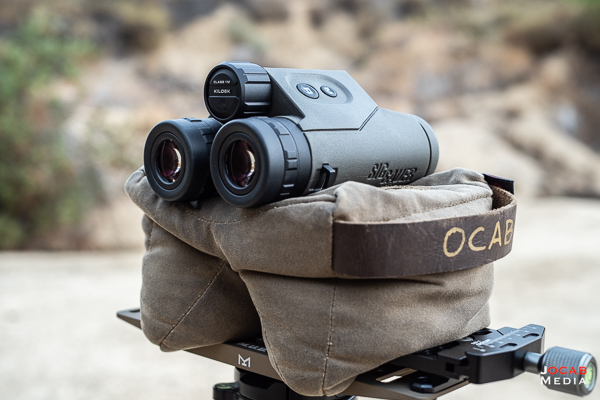
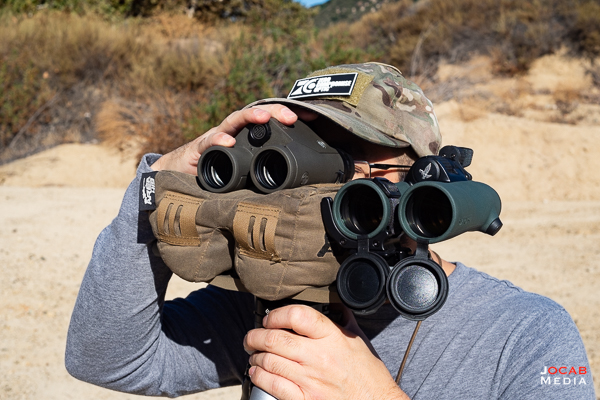
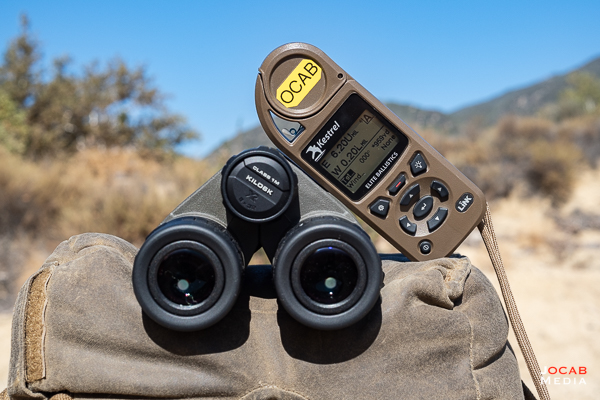
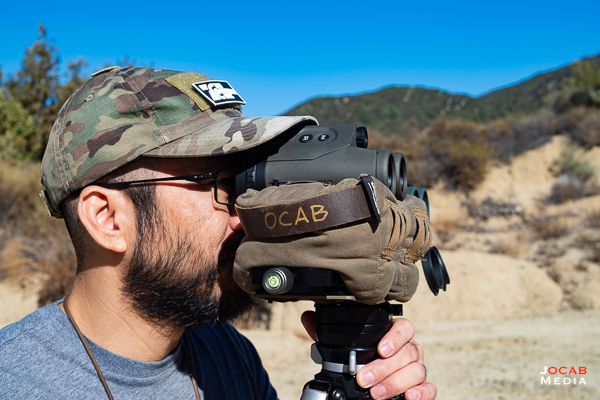
Gerald Bartholomew
Very interesting. I would like to see a comparison between Swarovski and Leica. I recently returned Swarovski NL pure. After getting them home (not the display pair) I noticed a small bead of grease on the objective lens also the lens nut looked to be tampered with. I returned them and exchanged for the display pair because the didn’t have any new units available. After short use the objective lens rubber cover fell off broken. I imagine I would have to order from overseas and wait and wait and wait so I returned them for a refund. Not good for a 3200.00 binocular. Thinking now Leopold, EL’s or Leica. I am wondering if Swarovski quality control is suffering during the pandemic.
Jonathan Ocab
That is unfortunate. I know two other people with NL Pure binoculars and none of us had any issues.
Ben McCord
Thank you for your review. I recently acquired a set of the sig kilo 6k’s. I was using them in a low light hunting situation. They performed terribly in low light. Faded out at edges, just as you stated. A couple of evenings later, I compared them at dusk to a set of Vortex and a set of Zeiss Conquest HD. Both of the latter offered an additional 15-20 minutes of view after the Sig kilos faded out. The optics are simply not sufficient in low light conditions. This in my experience is the most critical time when you need them to perform. Very disappointing. Mine also have a dark blue hue to them, which appears dim even in daylight.
Good article and I appreciate your honest review.
Sig Sauer Optics
This review of the Sig Sauer KILO6K-HD Compact piqued my interest as a dedicated user of Sig Sauer Optics. While the built-in Applied Ballistics Lite is a promising feature, I appreciate the reviewer’s balanced perspective highlighting the potential drawbacks like edge softness and minor build concerns. Comparing it to my own experience with the Sig Kilo2400 and a separate ballistic solver, I value clarity and reliability just as much as convenience. I’m curious to explore the KILO6K-HD further to see if its integrated functionality outweighs the potential compromises.